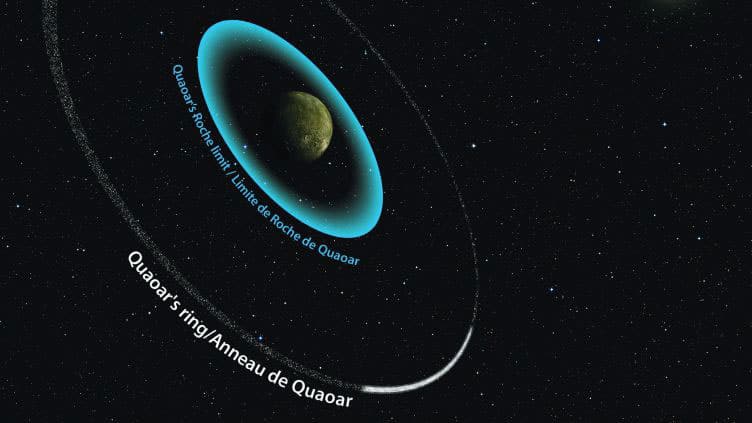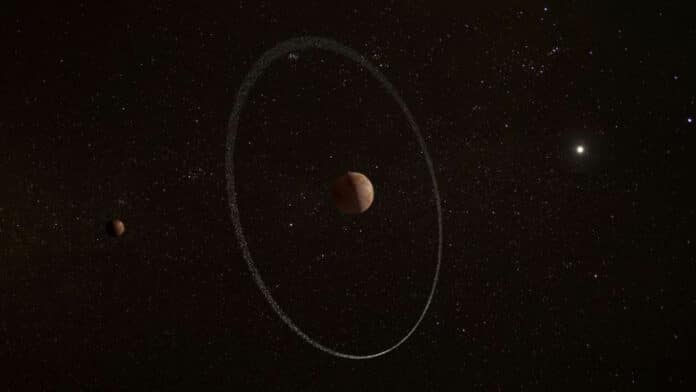Planetary rings are observed around giant planets, small bodies, and dwarf planets. Up to now, all known dense rings were located close enough to their parent bodies, where tidal forces prevent material with reasonable densities from aggregating into a satellite.
In a new study, a large team of international scientists using HiPERCAM – a susceptible camera developed by scientists at the University of Sheffield– has discovered a new ring system in our Solar System. The team has found a new ring system around a dwarf planet- Quaoar- on the edge of the Solar System.
Quaoar is a Pluto-sized dwarf planet orbiting beyond Neptune. This trans-Neptunian object has an estimated radius of 555 km and possesses a roughly 80-km satellite that orbits at 24 Quaoar radii.
The rings are too small and faint for direct viewing in a picture. Instead, they discovered rings by monitoring an occultation, which occurs when Quaoar hides a background star’s light as it orbits the Sun. The event was short than a minute—but two unexpected light dips that appeared to be part of a ring system encircling Quaoar came before and after it.
What makes the ring system unique is that it lies at a distance of over seven planetary radii – twice as far out as what was previously thought to be the maximum radius according to the so-called `Roche limit,’ which is the outer limit of where ring systems were thought to be able to survive.

Comparatively, Saturn’s major rings are located within three planetary radii. Therefore, ring formation hypotheses must be reexamined in light of this discovery.
Professor Vik Dhillon, a co-author of the study from the University of Sheffield’s Department of Physics and Astronomy, said: “It was unexpected to discover this new ring system in our Solar System, and it was doubly unexpected to find the rings so far out from Quaoar, challenging our previous notions of how such rings form. Our high-speed camera – HiPERCAM – was key to this discovery as the event lasted less than one minute, and the rings are too small and faint to see in a direct image.“
“Everyone learns about Saturn’s magnificent rings when they’re a child, so hopefully, this new finding will provide further insight into how they came to be.”
Journal Reference:
- Morgado, B.E., Sicardy, B., Braga-Ribas, F. et al. A dense ring of the trans-Neptunian object Quaoar outside its Roche limit. Nature 614, 239–243 (2023). DOI: 10.1038/s41586-022-05629-6
